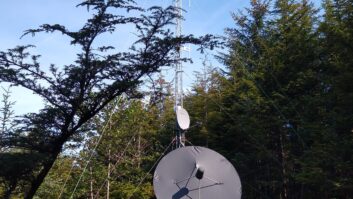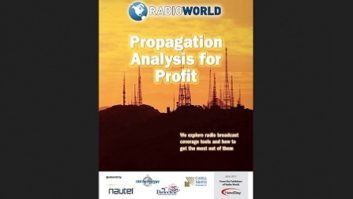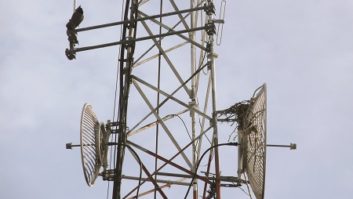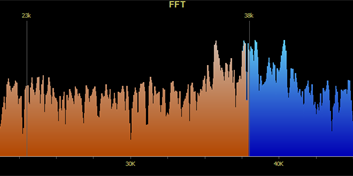
It appears that the FCC is in the final stages of resolution of the long-running battle of LPFM vs. translators. According to the Fletcher, Heald and Hildreth August 2012 blog, the Office of Management and Budget has now approved the proposals as outlined in the Fourth Report and Order published in March 2012. The guidelines of that Order allow the FCC to award as many of the backlogged translators licenses as possible, within limits that leave spectrum available for Low-Power FM licenses in the top 150 markets.
The commission inadvertently began the conflict in 2003 when they opened up a window for translator licenses without setting any public policy limits on applications. No technical requirements were in place to even determine if an application could legitimately be built. It was the heyday of anti-regulatory fervor applied to an industry that had been intensely regulated since its inception, and the crowd went wild. With plenty of advance warning, applicants prepared a flood of applications for every conceivable geographic corner and population center. Why not, if the government was giving away licenses for the FM band, then at the peak of equity-fueled valuation?
Any entity, whether or not a broadcaster, was allowed to file for translators. This invited outside speculators to put in barely literate applications with the hope of selling any properties thus obtained back to broadcasters at a profit. It also fostered a vision of national radio networks via a phalanx of translators, satellite fed.
When more than 13,000 translator applications (some entities filed several thousand each) landed in the FCC’s inbox, it was apparent that the whole process had been a mistake. Broadcasters who had applied for translators for traditional signal enhancement purposes found themselves swarmed with mutually exclusive applications, including multiple applications from one entity that were themselves mutually exclusive. But most importantly, everyone knew that some kind of line had been crossed in terms of spectrum. If all the applications had been allowed to proceed, this window marked the end of any available spectrum for future Low-Power FM or translator services where any population existed to be served. That was it — the whole enchilada would have been given away.
THE BACKLASH
Acting on complaints, the FCC froze 6,500 or so of the translator applications and settled down to the task of trying to come up with a reasonable fix. In the end, it took some help from Congress and nine years to get where we are today. Both sides will get some of what they want.
Entities that filed in the 2003 window will be allowed to keep up to 50 of their applications, but the rest must be withdrawn. The freeze will be removed allowing applications to proceed immediately. However, there’s still a catch.
The FCC spent years looking at the various broadcast markets and evaluating potential channels for LPFM stations. Each market was broken into fine grids for analysis. Locating new LPFM opportunities was assisted by the congressionally mandated relaxation of rules on spacing of third-adjacent stations. LPFM will be given at least this level of preference or protection: If a market only has room for LPFM or a translator, all translator applications in that market will be dismissed.
If the measure of the wisdom of a compromise is the degree to which it is disliked by both parties, then the FCC has been wise in its deliberations. Certainly hundreds, if not thousands, of new translators will be authorized in the near future as the freeze is lifted. Many AM stations may be in the market for one of these new licenses to supplement their coverage at night. We can expect that soon after this backlog has been processed that a new window for LPFMs will open, which has been a Congressional goal for many years. But even with the relaxed interference rules, only a relatively small number of channels remain for LPFM.
Those with visions of national networks are also unhappy; but at least to this observer, the idea of using a class of stations designed to augment local services and fill in coverage gaps was a poorly conceived goal at best. The Telecommunications Act of 1996 essentially deregulated ownership limits on radio licenses. Those looking to build national networks can do so without having to resort to secondary channels a few watts at a time. Certainly, giving away such a valuable quantity of spectrum to one or two players was never the goal of the FCC when it opened the flood gates in 2003.
IS THIS THE END OF AN ERA?
Significantly, in the opening section of the Fourth Report and Order, the FCC notes that the clearing of the 2003 translator window followed by a subsequent LPFM window are likely to be virtually the last of their kind. “We have determined, based on these studies, that the next LPFM window presents a critical, and indeed possibly a last, opportunity to nurture and promote a community radio service that can respond to unmet listener needs and underserved communities in many urban areas” [from paragraph 2 of the introduction]. As is generally true with most occasions when the FCC gets stuck on an issue, the outcome represents a watershed moment. We appear to be reaching the limit for FM with regards to creating new stations in areas with actual population.
All of which begs the question: Will the FCC ever agree to add more spectrum to the FM band in the face of what continues to be an overwhelming demand? The TV 6 band would make a nice addition to a service that continues to grow and is ready to take on even more.
Michael LeClair is chief engineer for radio stations WBUR(AM/FM) in Boston; he has been technical editor of Radio World Engineering Extra since its inception in 2005.











